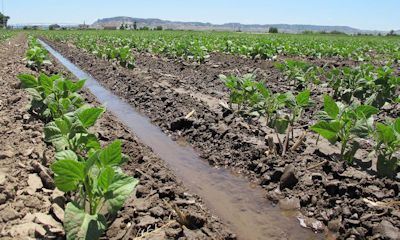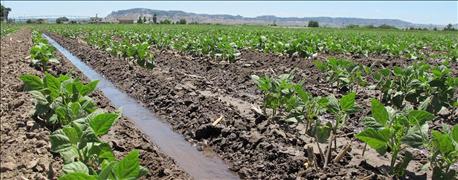May 14, 2016

Nebraska is forecasted to plant 115,000 acres of dry beans, according to the March USDA cropping intentions report. That would be down 25,000 acres (21%) from 2015. If this forecast is accurate, it would be the lowest number of planted dry bean acres in the state since 2007. Nationally, USDA predicts 1,559,000 acres of dry beans will be planted, down 205,400 acres (13%) from 2015.

A DROP IN DRY BEAN ACRES: Planted acres of dry beans are forecast to be down 21% from 2015, according to USDA March report. Dry beans are planted in late May to early June in Nebraska. (Photo credit: Panhandle REC)
Competition with other crops
Locally, dry beans must compete with corn and sugar beets for acres during the planting season. The relative price of beans to these other commodities greatly influences the number of acres that will be planted. Other factors influencing planting of dry beans include the planting loss or prevent planting of other commodities. Farmers who lose early-planted corn or sugar beets to frost or if planting conditions are too dry or too wet in April and May, may plant dry beans in late May or early June.
Lower acres of dry beans for this year are to be expected based on current market conditions. From October 2014 until August 2015, farmers were not able to sell their Great Northern beans due to difficulties with over supply and complications with exports. In September 2015 Great Northerns came back on the board at $18 per hundredweight, one-third the price from just a year earlier. Pintos too have struggled with a modest price at or below breakeven since September 2014.
Market conditions play a role
The current price of beans – at about $24 per hundredweight. for both Pintos and Great Northerns – is not encouraging producers to plant more acres. Dry bean processors are currently forward contracting beans at breakeven prices, and are limiting the number of bags each grower can contract. No futures market exists for dry edible beans, making it more difficult for producers to manage their price risk.
For more information, contact Jessica Groskopf, Extension educator for agricultural economics, at [email protected].
Source: UNL CropWatch
You May Also Like




